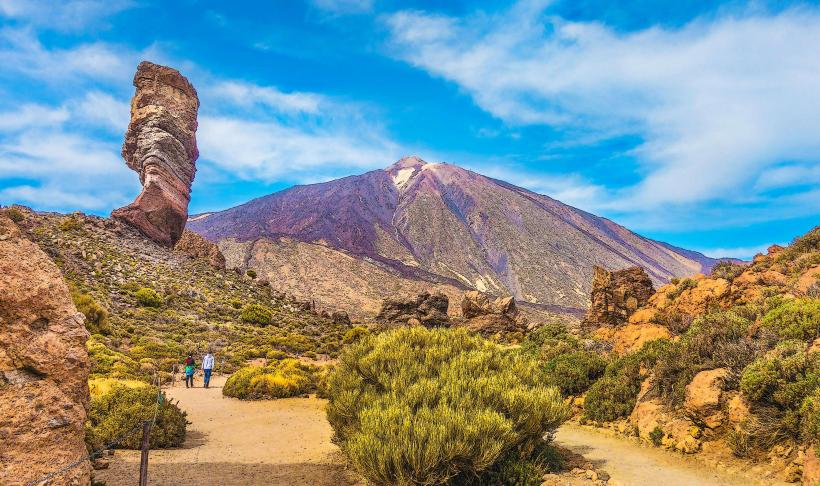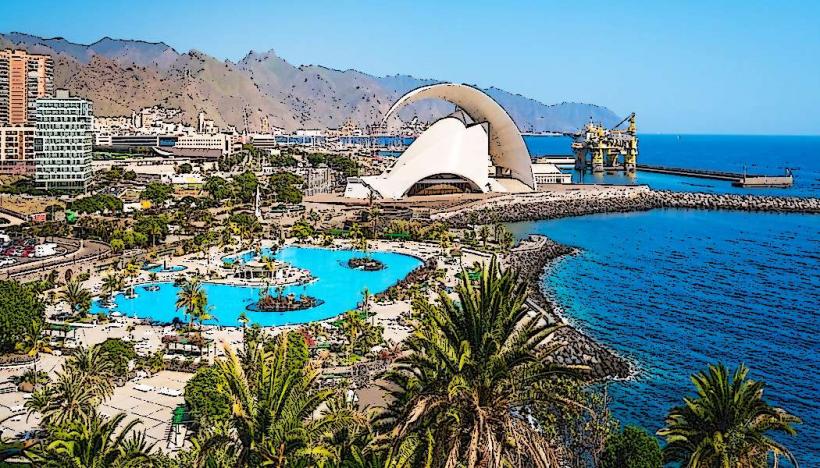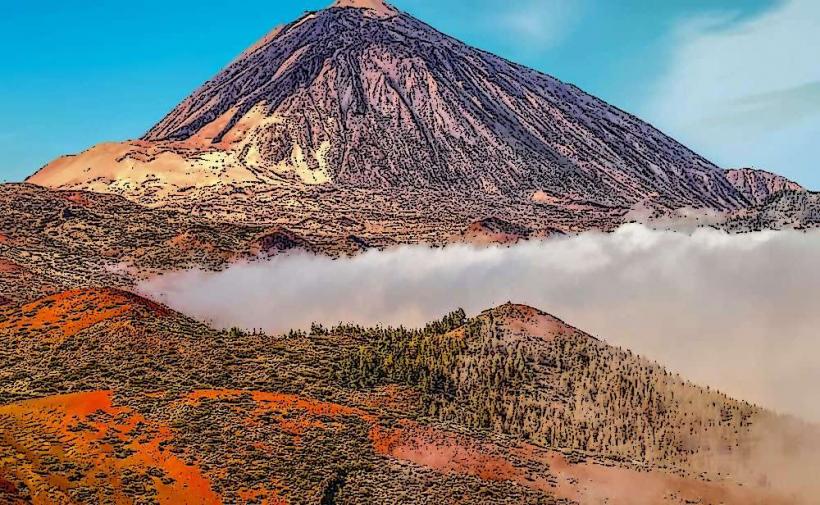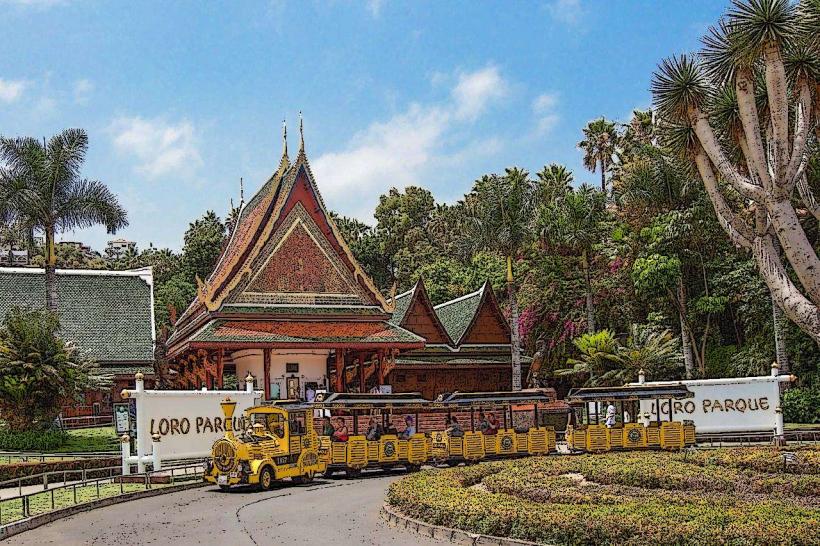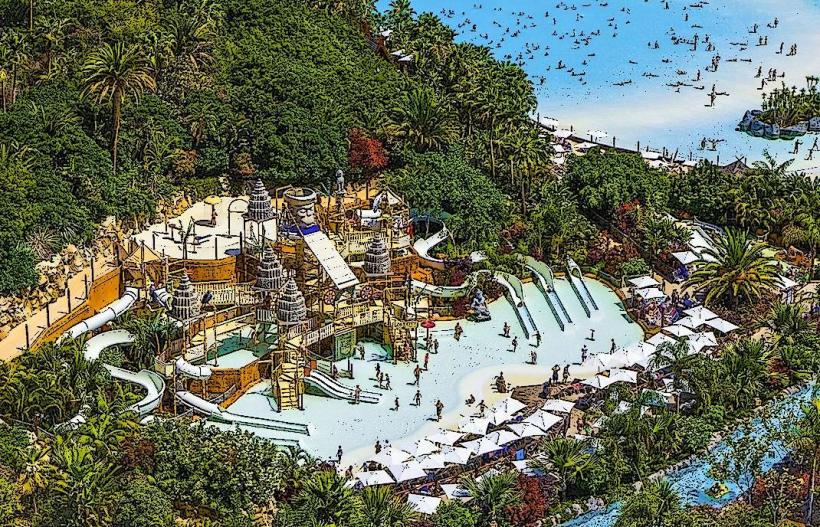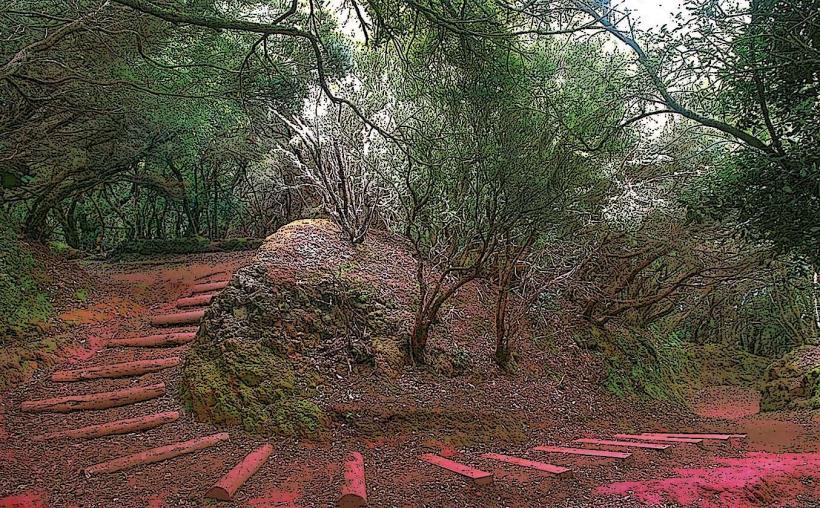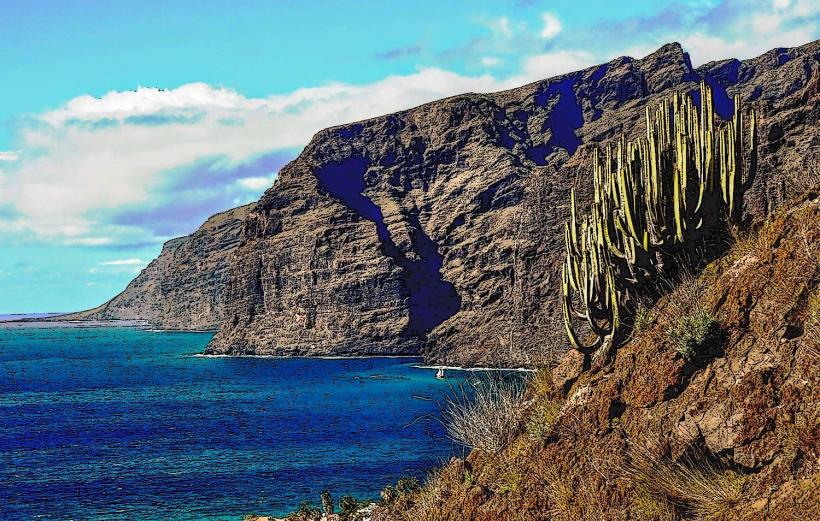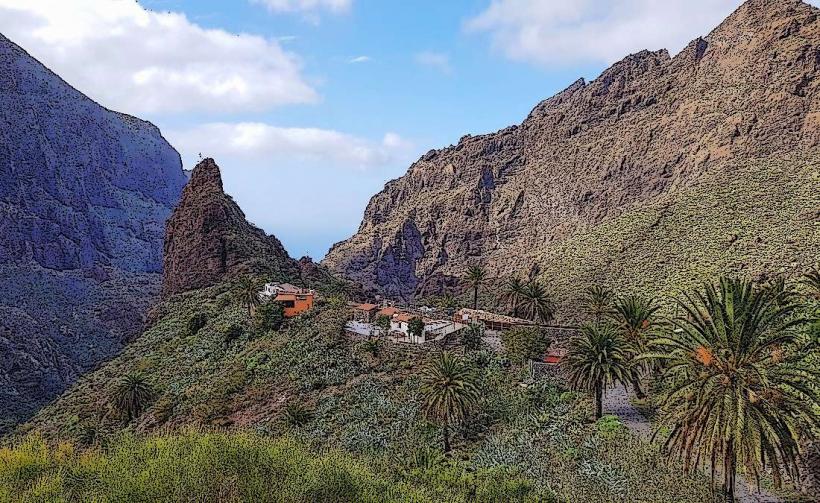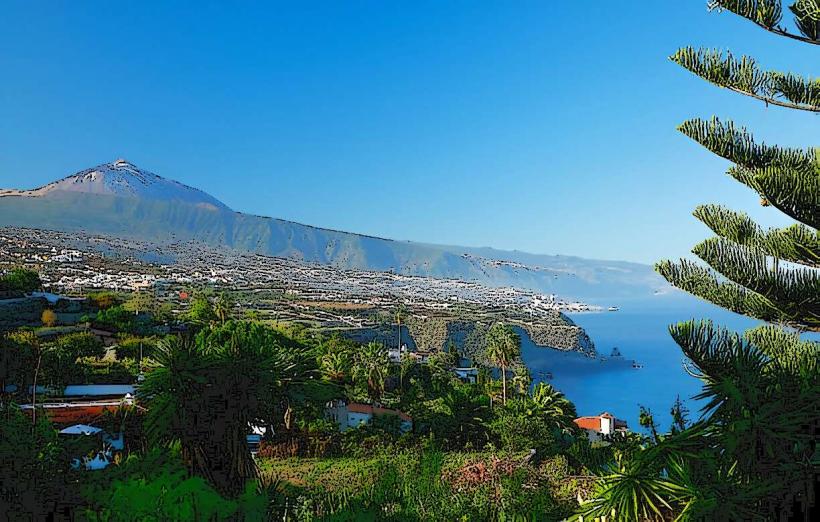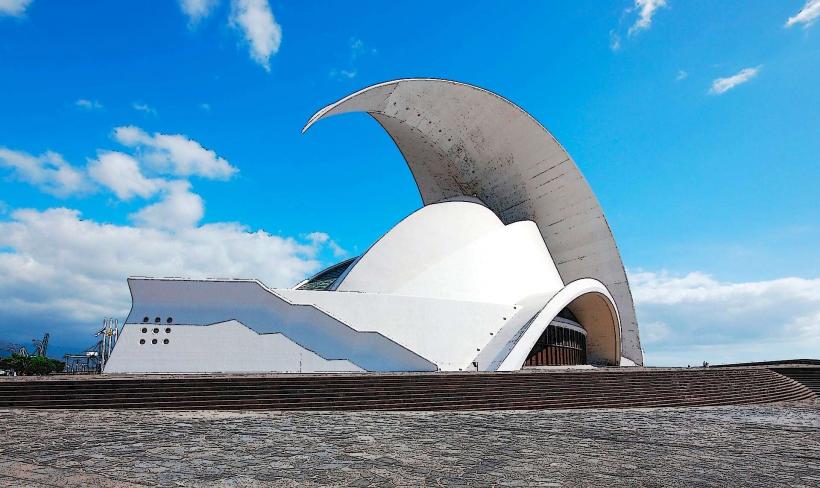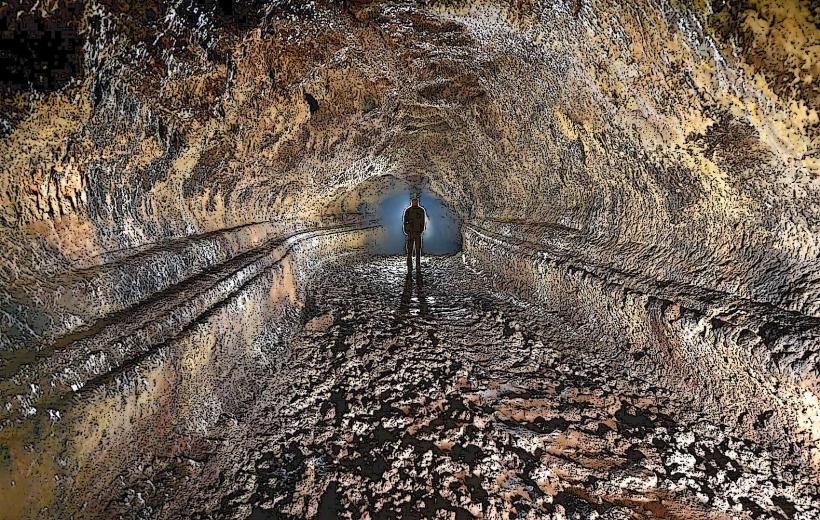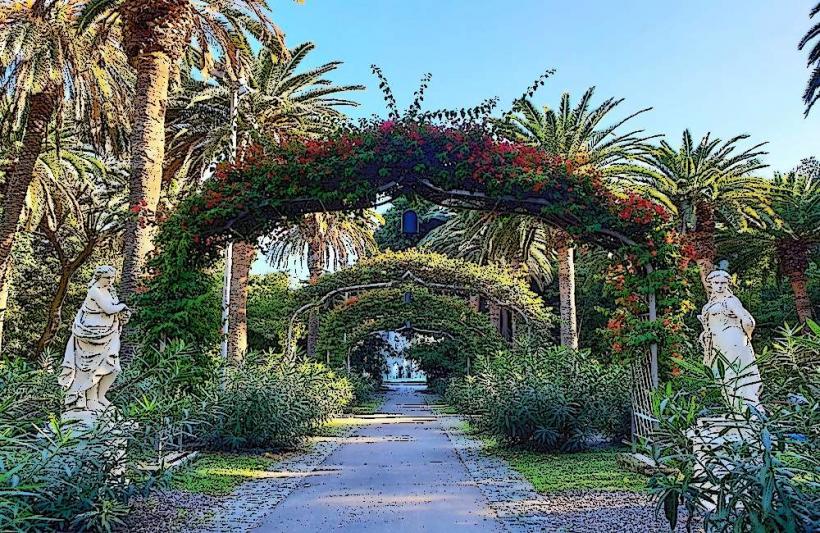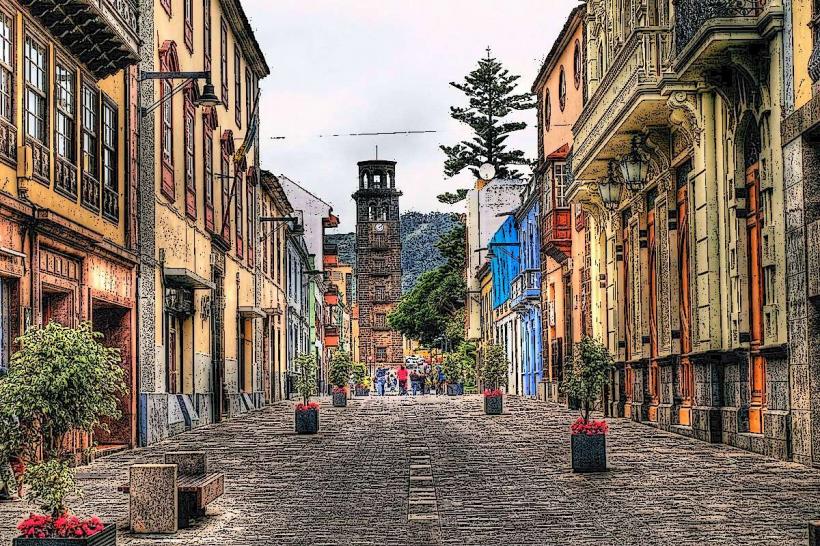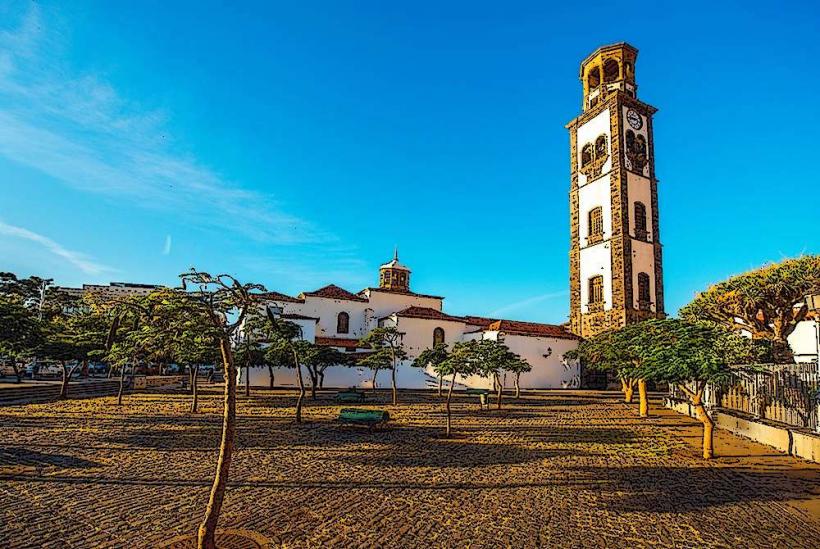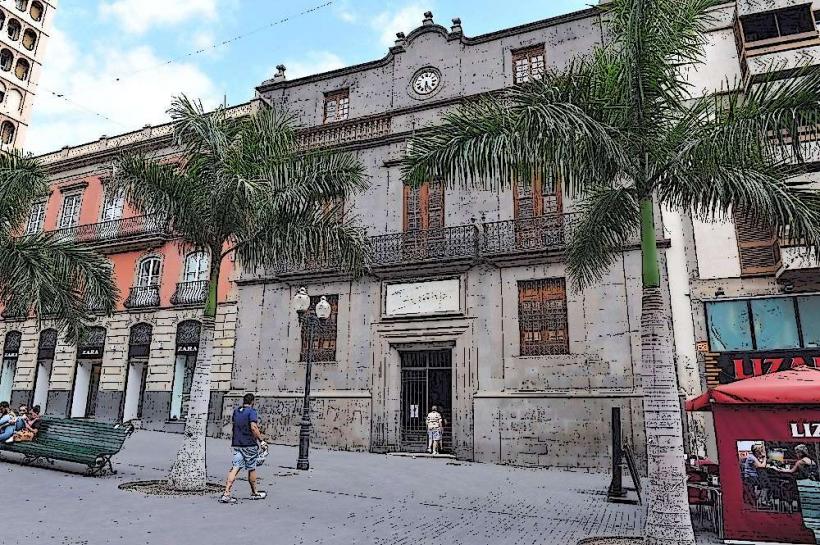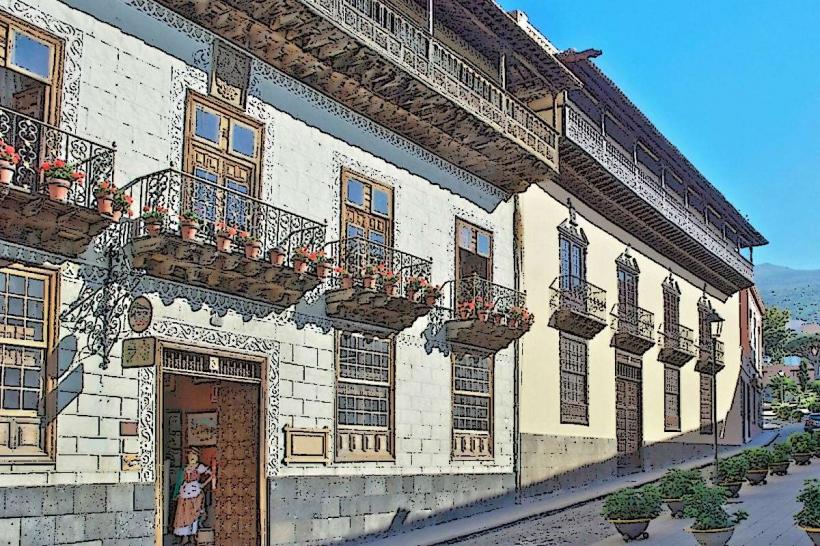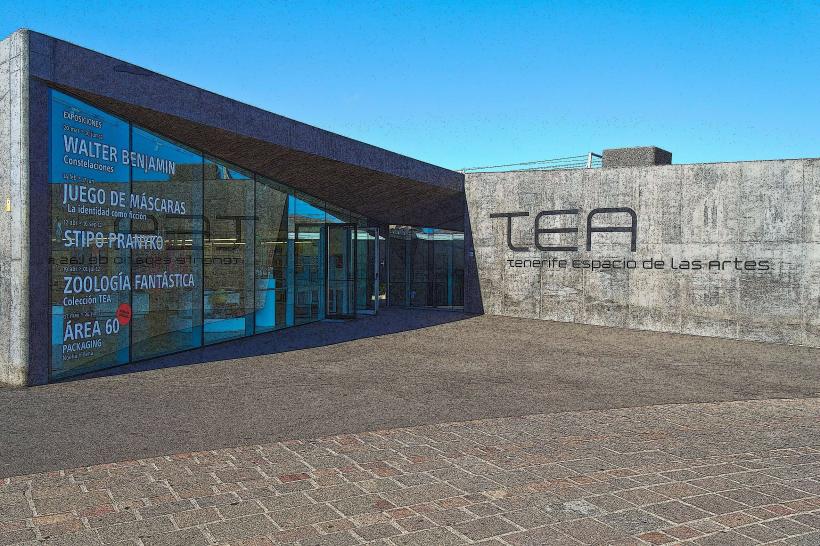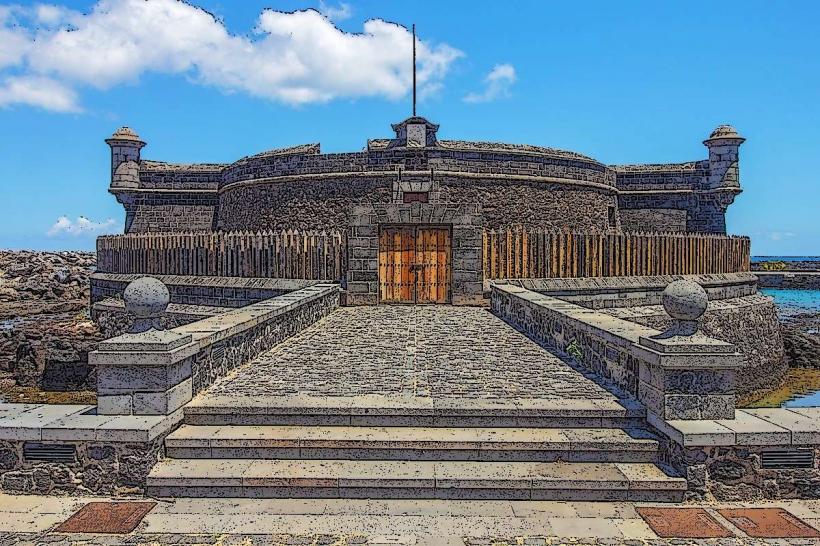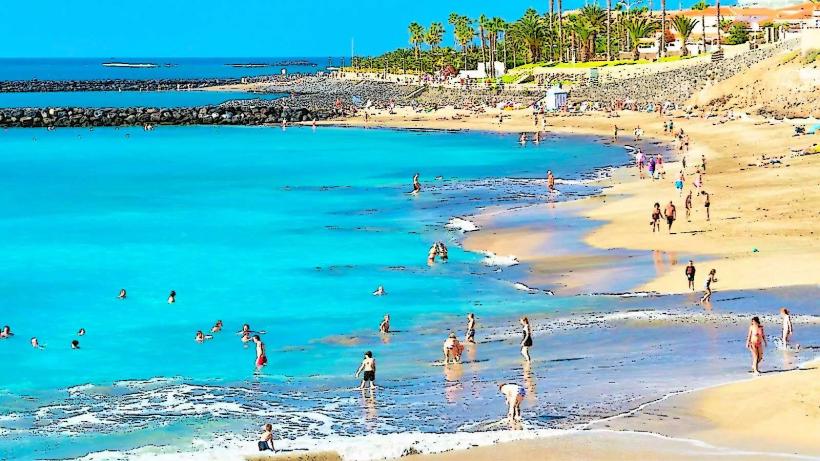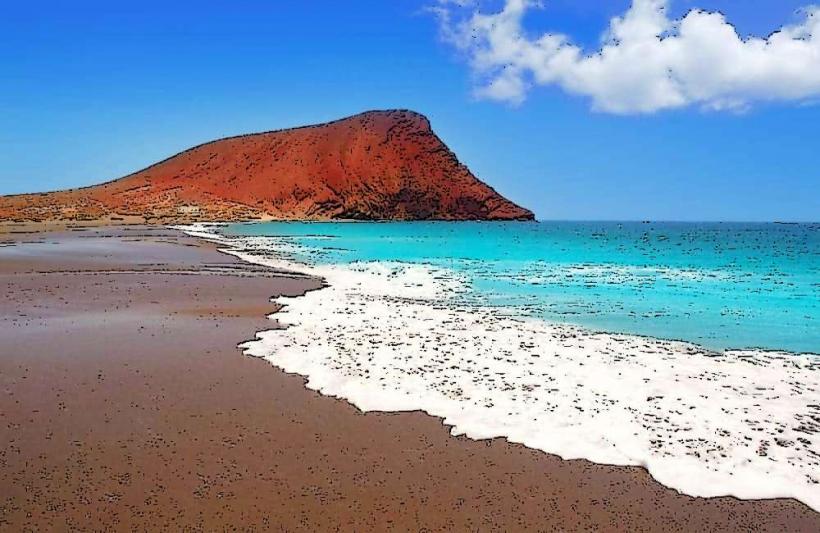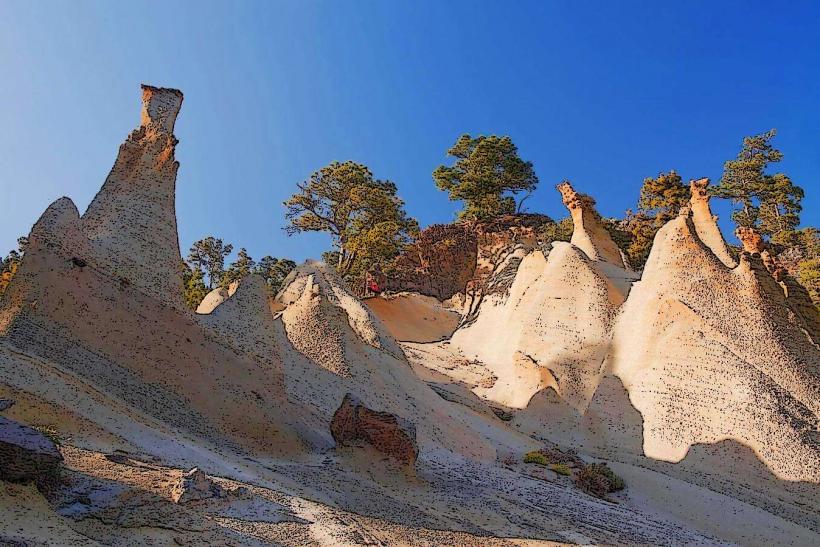Information
Landmark: Parque Natural de TenoCity: Tenerife
Country: Canary Islands
Continent: Europe
Parque Natural de Teno is a protected natural area located in the northwest of Tenerife, one of the Canary Islands in Spain. It is known for its rugged landscapes, dramatic cliffs, and rich biodiversity. The park is part of the Teno Massif, a mountainous region that offers some of the most spectacular and remote scenery on the island. The area is renowned for its natural beauty, traditional culture, and excellent hiking opportunities.
Here are key details about Parque Natural de Teno:
Geography and Location:
- Location: Parque Natural de Teno is situated in the westernmost part of Tenerife, within the municipality of Buenavista del Norte, and extends to parts of Los Silos and Santiago del Teide. It is bordered by the Atlantic Ocean to the north and is surrounded by steep, mountainous terrain.
- Area: The park covers an area of about 8,600 hectares (approximately 33 square miles), and it includes a variety of ecosystems, from lush forests and valleys to rugged cliffs and coastal areas.
Landscape and Geology:
- Mountainous Terrain: The park is part of the Teno Massif, a volcanic mountain range that features dramatic cliffs, ravines, and valleys. The landscape is shaped by centuries of volcanic activity and erosion, creating steep ridges, deep gorges, and narrow ravines. The highest peak in the area is Roque de Teno, which rises to 1,300 meters (4,265 feet) above sea level.
- Cliffs and Ravines: The cliffs of Los Gigantes, which rise dramatically from the sea to heights of up to 800 meters (2,625 feet), are one of the park’s most iconic features. These towering cliffs provide breathtaking views over the ocean and surrounding mountains.
- Coastal Areas: The park also extends to the rugged coastline, with rocky beaches and steep cliffs that drop directly into the Atlantic Ocean. The region is relatively untouched by development, preserving its wild and natural character.
Flora and Fauna:
- Vegetation: Parque Natural de Teno is home to a rich variety of plant species, including both endemic and Mediterranean flora. The park features lush laurel forests (laurisilva), which are part of a UNESCO-listed cultural landscape, and are a remnant of ancient subtropical forests that once covered much of the Canary Islands. The lower regions of the park are characterized by dry, scrubby vegetation, while higher altitudes support forests and even alpine flora.
- Wildlife: The park is a habitat for numerous species of birds, mammals, and reptiles. Some of the most notable species include the Canary Island kestrel, the Barbary partridge, and various species of bats. The region is also important for marine life, particularly around the cliffs and coastal areas.
- Endemic Species: The park is home to several endemic species of plants and animals that are unique to the Canary Islands. The rich biodiversity in the park makes it a significant ecological area for conservation.
Activities:
Hiking and Trails: Parque Natural de Teno offers an extensive network of hiking trails, making it a popular destination for trekkers and nature enthusiasts. The trails vary in difficulty, from short, easy walks to more challenging mountain routes. Some of the most popular hiking routes include:
- Masca Valley (Barranco de Masca): A challenging hike that takes visitors through a steep ravine from the village of Masca down to the coast, offering stunning views of the mountains and cliffs.
- El Palmar to Teno Alto: This route offers a scenic hike through the laurel forests and up to the Teno Alto, the high plateau of the massif.
- Roque de Teno: A challenging climb to the summit of Roque de Teno, offering panoramic views of the island and the surrounding ocean.
Birdwatching: The park is a prime location for birdwatching, particularly for those interested in observing native species like the Canary Island blue tit and the Bonelli’s eagle.
Scenic Drives: The park’s remote location and mountainous terrain make for some scenic drives. The winding roads, such as the one leading to the village of Masca, offer panoramic views of the cliffs, valleys, and the coastline.
Cultural and Historical Significance:
- Traditional Villages: The park is home to several traditional villages, such as Masca, El Palmar, and Teno Alto, which have preserved their unique Canarian culture and architecture. These villages offer a glimpse into rural life in Tenerife, with stone houses, terraced fields, and a slower pace of life.
- Agriculture: The terraces and fields of the Teno region have been cultivated for centuries. Historically, the area has been used for farming, with crops such as bananas, tomatoes, and potatoes grown in the fertile valleys. In some areas, traditional farming methods are still practiced today.
Protected Area and Conservation:
- Protected Status: Parque Natural de Teno is a protected natural area due to its exceptional ecological and geological value. It forms part of the broader Teno Rural Park and is recognized for its unique landscapes and biodiversity.
- Conservation Efforts: The park is managed with an emphasis on conservation and sustainable tourism. Restrictions are in place to preserve the delicate ecosystem, especially in areas of high environmental sensitivity. There are efforts to protect the laurel forests, manage the wildlife populations, and prevent overdevelopment in the area.
Visitor Information:
- Visitor Centers: The park has visitor centers that provide information about the park’s natural and cultural heritage. These centers often offer maps, educational materials, and advice on hiking trails and safety.
- Access and Transportation: Access to the park is possible by car, though some of the roads are narrow and winding. Visitors should be cautious when driving in the area, especially in the more remote regions. Public transportation options to some of the villages are available, though they may be limited.
Conclusion:
Parque Natural de Teno is one of Tenerife’s most scenic and ecologically significant areas, offering dramatic landscapes, rich biodiversity, and a glimpse into the island’s traditional rural life. With its towering cliffs, deep ravines, lush forests, and charming villages, it is an ideal destination for nature lovers, hikers, and those seeking an authentic experience of Tenerife’s natural heritage. Whether you’re hiking through the rugged terrain, exploring the tranquil villages, or simply taking in the stunning views, the park offers a truly memorable experience.

